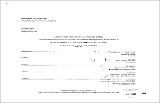| dc.contributor.advisor | Julian Beinart. | en_US |
| dc.contributor.author | Murphy, Stephan L. (Stephan Lane), 1971- | en_US |
| dc.contributor.other | Massachusetts Institute of Technology. Department of Urban Studies and Planning. | en_US |
| dc.coverage.spatial | f-nr--- | en_US |
| dc.date.accessioned | 2013-06-17T19:44:40Z | |
| dc.date.available | 2013-06-17T19:44:40Z | |
| dc.date.copyright | 1998 | en_US |
| dc.date.issued | 1998 | en_US |
| dc.identifier.uri | http://hdl.handle.net/1721.1/79170 | |
| dc.description | Thesis (M.S.)--Massachusetts Institute of Technology, Dept. of Architecture; and, (M.C.P.)--Massachusetts Institute of Technology, Dept. of Urban Studies and Planning, 1998. | en_US |
| dc.description | Includes bibliographical references (leaf 82). | en_US |
| dc.description.abstract | The study of Ibadan, Nigeria was conducted to analyze how Colonization has altered, or not altered the structure of the traditional African city form of this Yoruba town. The study encompasses structural city form elements of Ibadan in terms of housing, open space and markets, public facilities, infrastructure, and natural resources. In order to assess the structure of a city, whether it be a western or non-western model, there has to be an investigation of how the people use and enjoy (recreation and social interchange) the city. These elements are a good identifiers as to the effectiveness of city planning methods, and best qualified through the analysis of urban plans. The study is intended to render a series of conceptual city planning development strategies that could be the foundation for further investigation regarding how this large African city could expand in the future, while retaining some of its traditional integrity. Such a study of traditional African city form conflicting with Colonial forces can have broader applications than in Africa alone, and can be utilized where any indigenous form (regardless of geographic location) is met with an introduced methodology. The information presented in this study does not reflect contemporary conditions in Ibadan due to limited access to data, and should be viewed as an analysis of the planimetric form based on urban design principles. Development concepts are reflective of conditions between 1972 and the early 1980's and could be reapplied using the same techniques outlined herein to reflect the contemporary state of the city. | en_US |
| dc.description.statementofresponsibility | by Stephan L. Murphy. | en_US |
| dc.format.extent | 82 leaves | en_US |
| dc.language.iso | eng | en_US |
| dc.publisher | Massachusetts Institute of Technology | en_US |
| dc.rights | M.I.T. theses are protected by
copyright. They may be viewed from this source for any purpose, but
reproduction or distribution in any format is prohibited without written
permission. See provided URL for inquiries about permission. | en_US |
| dc.rights.uri | http://dspace.mit.edu/handle/1721.1/7582 | en_US |
| dc.subject | Architecture. | en_US |
| dc.subject | Urban Studies and Planning. | en_US |
| dc.title | Structure of an African city : study of Ibadan, Nigeria : city structure and morphology | en_US |
| dc.title.alternative | Ibadan, Nigeria : city structure and morphology | en_US |
| dc.type | Thesis | en_US |
| dc.description.degree | M.C.P. | en_US |
| dc.description.degree | M.S. | en_US |
| dc.contributor.department | Massachusetts Institute of Technology. Department of Architecture | |
| dc.contributor.department | Massachusetts Institute of Technology. Department of Urban Studies and Planning | |
| dc.identifier.oclc | 40154484 | en_US |
